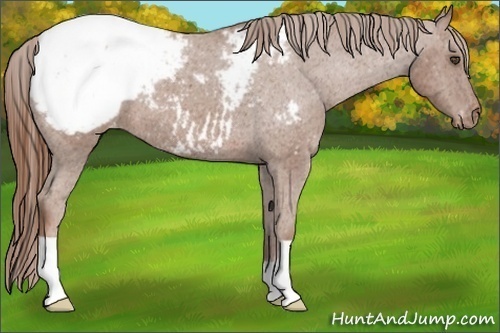X
HGG Community Forums
Log In to HorseGeneticsGame
HGG Community Forums
Join our discord server!
Howdy, Stranger!
It looks like you're new here. If you want to get involved, click one of these buttons!
Categories
- All Discussions68,241
- Announcements356
- HJ2 Discussion67,060
- ↳ New Member Introductions569
- ↳ Help me out3,469
- ↳ Horses For Sale and Auction12,515
- ↳ Breeding Ads and Sales3,456
- ↳ Herd Helper39,570
- ↳ Bug Discussion120
- ↳ Repair Log12
- General Discussion825
- ↳ Saddle Sisterhood32
- ↳ Games, Contests and GiveAWays54
- ↳ Genetics245
In this Discussion
- Alohomora September 2017
- Ammit August 2017
- best friend June 2017
- BlueValley August 2017
- Cheers July 2017
- ColorGoodStables June 2017
- ConfluenceFarms June 2017
- Dinascar June 2017
- DivineDreams August 2017
- fj1482 June 2017
- GallifreyanAngel June 2017
- Haltanny June 2017
- KerredansCorral June 2017
- NorthernStars August 2017
- ObsidianKitsune August 2017
- Ravenbrook July 2017
- RipshinCreekFarm June 2017
- Ritsika June 2017
- RoseFlute August 2017
- RunFarAway June 2017
- SandycreekFarm June 2017
- StarfireAcres June 2017
- Stone Run Stables June 2017
- TheAppyLab July 2017
- Tigeria June 2017
- Timber August 2017
- Waldgraf June 2017
- Wildland Acres June 2017
- WindwardFarm June 2017
Who's Online (0)
Microdot Discussion
-
I would really like to see some breedings where you should be able to predict a single possible outcome based on the current hypothesis--either mm x mm or MM x MM breedings. So far nothing done has contradicted the hypothesis but nothing has been done that COULD contradict it, really. I'm working on building up my appy herd and will probably not report back til next season when I have enough Lp mares to provide a good sample. I believe my stallions are mm and MM.
mm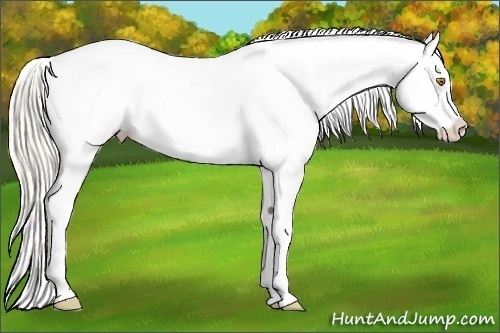
Bogeyman RS ECZTSRL
MM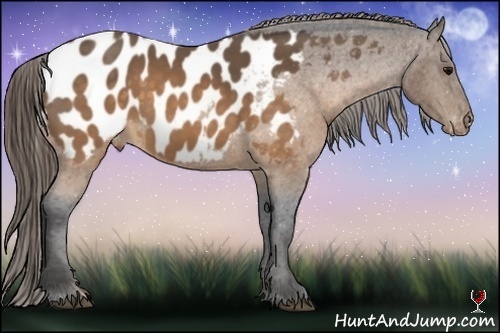
Call It My Wish ExP DPtcL -
@ObsidianKitsune I would consider both those girls Mm
-
@Cheers I tried but the foal ended up with no spots. The resulting foal should have been Mm lol
-
@FJ no I'm looking for crosses where the foal could absolutely never be Mm. I'm looking for homozygous crosses, which would be more likely to prove the theory than a ton of intermediates.
If you cross micro x micro and get intermediate or splotch, we know immediately that our theory is wrong and this isn't a simple Dominant/Incompete dominant/recessive gene. Doing unknown crosses or crosses with Intermediates doesn't really prove anything, since any outcome is technically possible.
Thanked by 1RoseFlute -
In the leo appy chat I put up my MM supposed boy. At the moment I don't have the money, but when I do I'll put him to my girls. Only two can be bred from (out of my 2G), but one I'm pretty sure is MM, and the other I think is mm.Producer of Volcanic Glass Drafts. Lapisobsidianus.
Prices are almost always negotiable. -
Ok so I did the MM x most likely MM and unfortunately, mummys w2 decided to have fun on the foal. Best pt I think I've bred, though. And now I really can't do anything until I either sell a horse or roll over happens xD
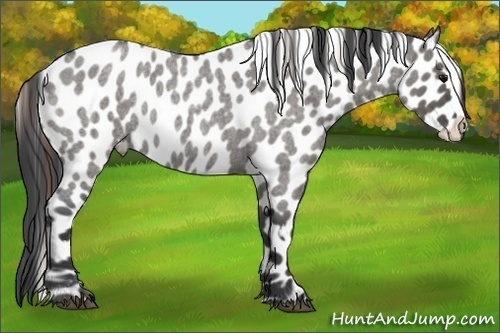
2 Dancing and Splashing Daddy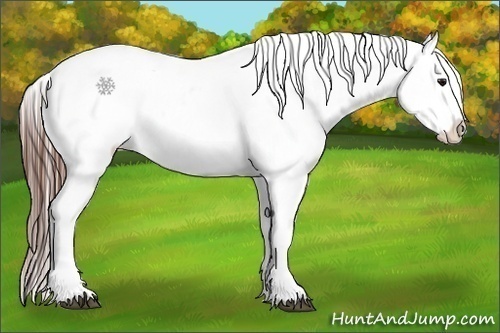
2 Dance of Spots Mummy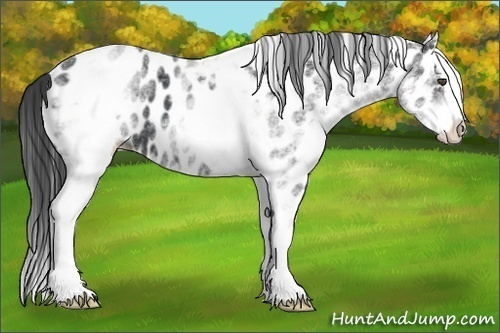
3 Dance Dance Dance Baby
Producer of Volcanic Glass Drafts. Lapisobsidianus.
Prices are almost always negotiable. -
There is more than 3 spots sizes.
___________
Need to contact me? Read this first.
http://www.huntandjump.com/forum/discussion/3/how-to-get-help-from-an-administratorThanked by 1fj1482 -
I think I need to go find out where my glasses have gone....
And this is kinda fun, like doing a puzzle except someone is watching over us and occasionally putting a piece down in the right place.Producer of Volcanic Glass Drafts. Lapisobsidianus.
Prices are almost always negotiable. -
Oh boy, now we all need to rethink this and take a closer look at spot sizes.
-
This probably also means that there is more than 2 alleles for this gene, most likely, since with 2 you can only get about 3 expressed at most. I wondered if it was to begin with, but hoped it wasn't... I'm only really good with the small punnet squares lolProducer of Volcanic Glass Drafts. Lapisobsidianus.
Prices are almost always negotiable. -
However this may also explain the "blanket" trait. I have one horse who I thought was possibly microdot due to not being able to see any spots on her blanket, but looking at her and her appy dad both have an entire white blanket, so maybe that is one of the expressions?
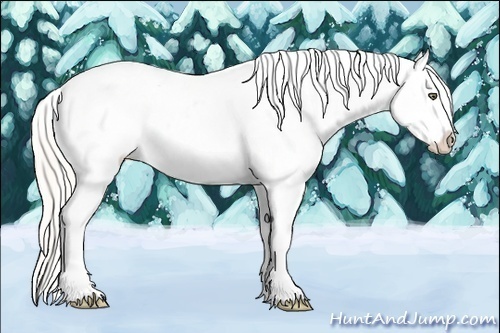
2 Colour of the Snow This is the mare in question. When I tilt the screen back I think I see one spot being exposed on her belly, right in the middle of her.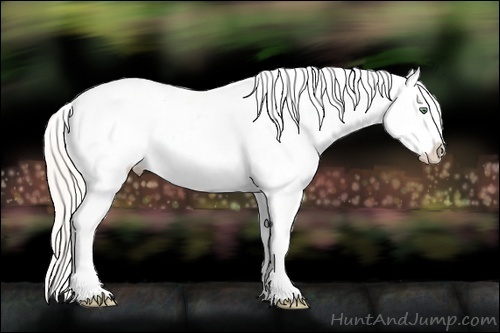
CF True Colors Her dad (not owned by me) is the same, except I see it on his hindquarter, just above the crease that separates it from his leg.Producer of Volcanic Glass Drafts. Lapisobsidianus.
Prices are almost always negotiable. -
This is a very interesting thread. I know I have tons of appys I have hoarded, though I do tend to grab the larger spotted ones. I'll have to see if I get time to look through some of them and see what I can breed. Problem is I got so much other types of breeding to do that I get distracted, lol. Lately I have been trying to breed the appies I have because I am searching for surprise snowflakes. So far, I have found one, on my HJ1 account. I am going to keep an eye on this thread, and try and post any appie foals that I breed so you can check them out.
-
@ObsidianKitsune The blanket gene is connected to the lp. If they are homo lp then its a blanket if it's het lp then you get spots.
-
Right. I completely forgot that....Just ignore me xD I don't think well in the cold, but I just blow dried my hair so I should be fine until sun down.Producer of Volcanic Glass Drafts. Lapisobsidianus.
Prices are almost always negotiable. -
rofl we all have brain farts from time to time. Believe me I have had a few today.
-
I believe there are at least 5 spot sizes, based on looking at other people's horses. I don't have very many appy's myself, so can't really form a solid hypothesis yet, but I believe there are at least either 2 genes or 3 alleles on 1 gene.
I'll post my boys, in case anyone is interested in using them.#28036 -
@Haltanny it'll most likely be an even number, because there is one copy from the mum and one copy from the dad. And I can barely tell the difference between all but the biggest and the smallest >.< I don't know how much help I'd beProducer of Volcanic Glass Drafts. Lapisobsidianus.
Prices are almost always negotiable. -
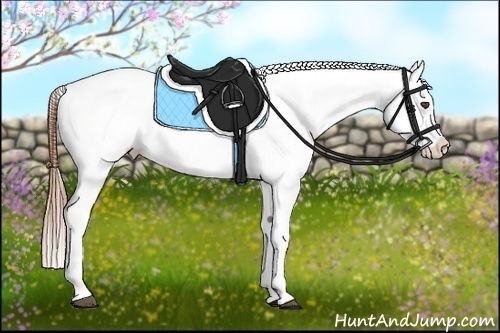
G1 Klinger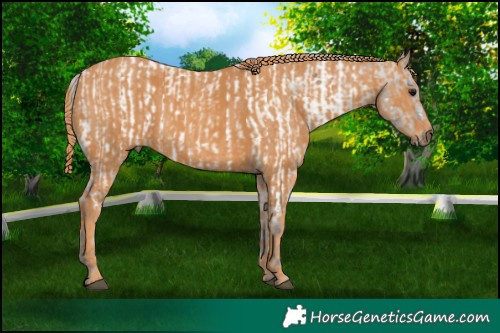
1 RS EP Sp Protege
This guy is homo LP, so no spots, but could produce some more for the project.#28036 -
@ObsidianKitsune not entirely sure what you mean, but it is possible to have odd numbers of alleles on a gene, and/or odd numbers of expression depending on # of genes, # of alleles and how they interact.#28036
-
Ooo...an interesting clue. More than three sizes. Which, as @ObsidianKitsune said, means there might be more than one gene involved. But, there could be multiple alleles for a single gene (such as At/A+/A/a).
Very interesting developments! I'm going to have to look through my stock and reassess. I wonder if there's interplay between genes involved! -
So I "borrowed" all the large spotted horses in the thread so far and compared them side by side (yes, I have no life lol). I believe are two sizes of "big" spots, let's say "Large" and "Big". I've posted the names below, but I'll get the links and edit this momentarily.
Large Spots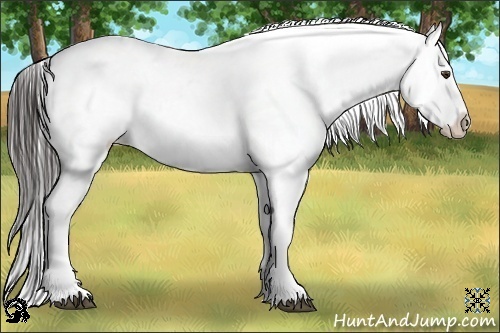
FR Jarla S6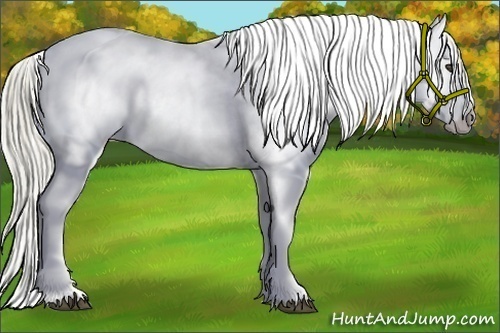
887323
Call It My Wish ExP DPtcL
Big Spots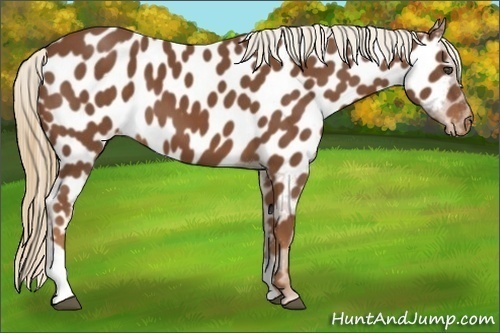
WF Reality 1G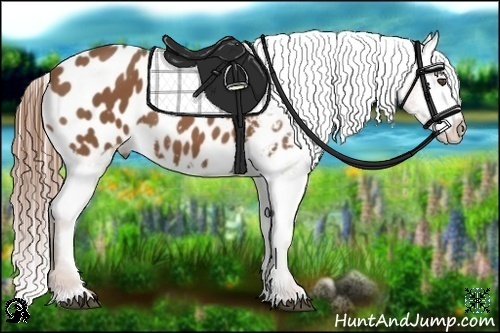
WG Renlys Fair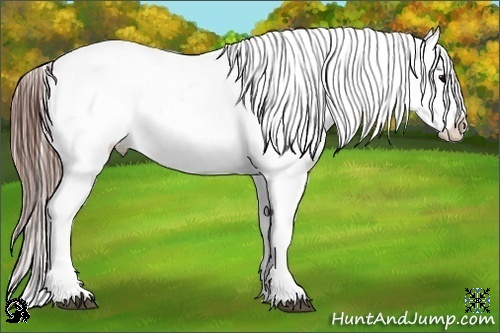
HR8 King In The North
WO1 Braeburn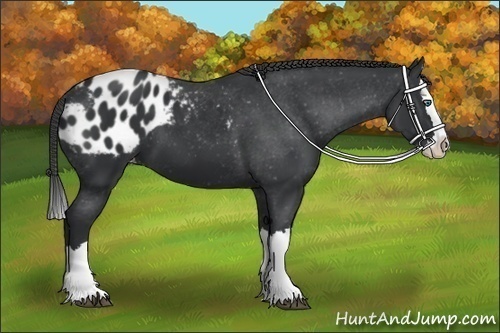
FR Little Miss#28036 -
I typically don't breed Appaloosa's, but I have found this discussion very interesting. I know most of you here picked up the Herd Helper I shared earlier. I still have 15 creates myself in addition to the three 4 year olds I already created. I would be happy to help with the hypothesis.
-
Later on, when I'm bored, I'm probably going to go through the horse search and look at all the different appys, just to see the different spot sizes. I don't really have the money to be taking in any more horses.Producer of Volcanic Glass Drafts. Lapisobsidianus.
Prices are almost always negotiable. -
I finally finished all my pasture breeding so am going to take a closer look at my appies and some others. I think @Haltanny is on to something with the two larger spot sizes. It's possible there are two 'microdot' sizes as well.
But, as @ObsidianKitsune suggests, I think figuring out the number of phenotypes would be helpful. Now that breeding is done, I've got some free time! -
@obsidian no worries. I figure most are in thesmae boat especially with all of the celebration herd helpers! Just wanted to give anyone who might have room a chance at them.
I'll probably breed them and see what happens! -
Also I believe, and of course now I can't find where it was posted, that Admit said there is more than one gene involved. Which could also be impacted by more than 2 alleles.
-
Here's all the micro/little dots in one spot (minus foals). Let's see if we can pick out any size differences.
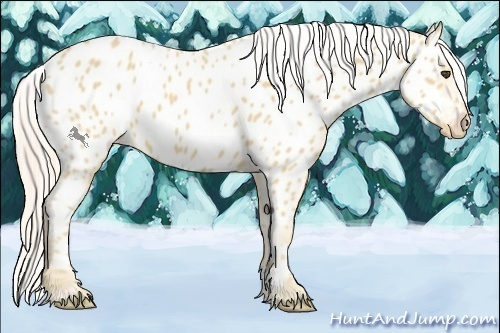
WF Sandra Dee 1G PF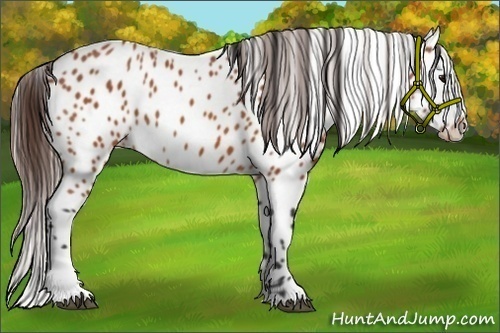
907320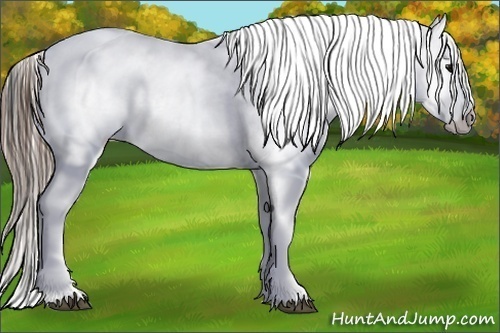
890889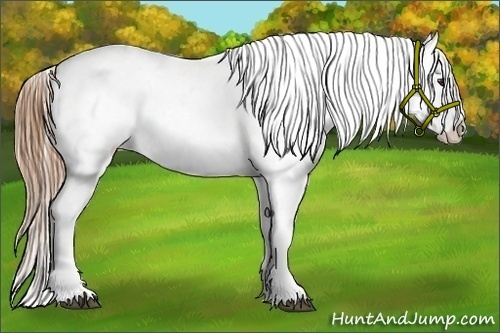
893313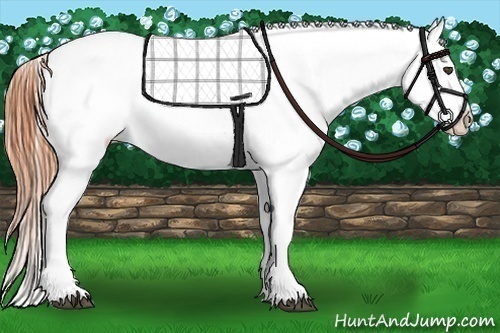
My Brown Eyed Girl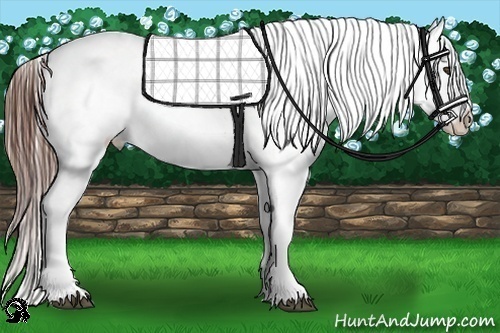
WG In the Knox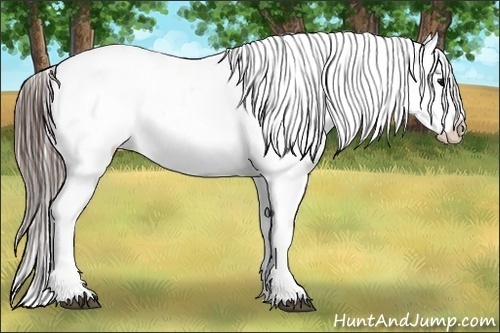
FR Dalia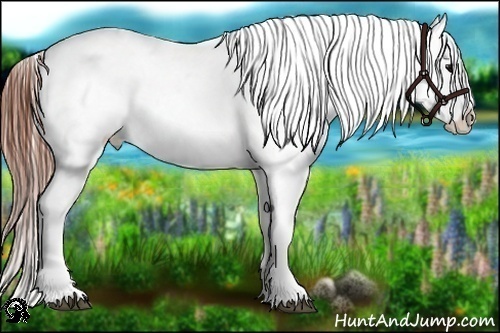
HR20 Absit Omen
FR Penny SX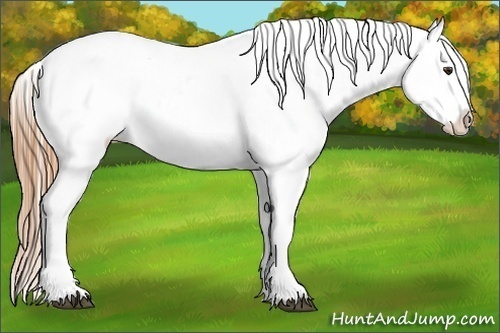
909854
Bogeyman RS ECZTSRL
2 Colour of the Snow#28036 -
I think there is at least three different sizes of the small dots to
-
I think Brown Eyed Girl, Dalia, Penny, and # 909854 have "micro" dots and the others are just "tiny" dots?#28036
-
From what I'm seeing, it is possible that there is a combo of micro and tiny as a potential size. In the Knox would be an example of that. Some spots appear to be the micro, but others are clearly more of a tiny distinction.
-
That's what I was thinking, with one being more "flea bitten", but I couldn't find examples. I think there's only two, but could be three...Producer of Volcanic Glass Drafts. Lapisobsidianus.
Prices are almost always negotiable. -
Interesting! It looks like the spot size of the dam and granddam breeds pretty true. These are the granddams foals and the spot size seems pretty consistent.
http://hj2.huntandjump.com/adv_search.php?&dam=320779&runsearch=1 -
Hmm...that is interesting. I have a potential theory for 2 separate genes, with one exerting a form of dominance over the other.
So we have what we've been calling "micro" and a gene I've taken to calling Size (abbreviated Sz and Sz+) for lack of creativity. Now say micro exudes dominance over size. While size is incomplete dominant (? terminology).
SzSz is large spots, Sz+Sz is intermediate, and Sz+Sz+ is our small or tiny spots. MM and Mm would be complete dominant and reduce the size of spots determined by Sz, and mm would have no impact on Sz.
It's a kind of odd theory and I'm pretty rusty on my genetics, so it might not even be scientifically correct. -
So your theory proposes:
SzSz mm - Large spots
SzSz M- - big?
Sz+Sz mm - medium?
Sz+Sz M- - small?
Sz+Sz+ mm - tiny?
Sz+Sz+ M- - Micro
Is that your thinking? It's sound genetically, I wonder if it's getting close in game. :)#28036 -
Sort of. Perhaps MM is also incomplete dominant. I'm trying to poke holes in it. So below with attempt to shore some of them up.
mm SzSz large
Mm SzSz large and big mixed
MM SzSz big
mm Sz+Sz medium
Mm Sz+Sz medium and small mixed
MM Sz+Sz small
mm Sz+Sz+ tiny
Mm Sz+Sz+ tiny and micro mixed
MM Sz+Sz+ micro -
Well, one thing that is hard to judge is when a non-appy is bred to a appy. I was just going through some of mine, and bred this one. Check on his sire's side. His sire is bred from a appy - non appy cross, and while his mother has microdots, he got large dots. So how can we judge what the non appy has?
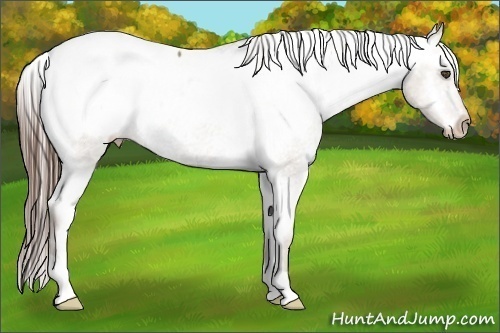
Kc4 Spotted Comet -
Honestly to move any further in our research I think we need some more direction from the woman herself.
-
The only way to know, or to get an idea rather, is to breed multiple appy's to the non appy and make a guesstimate based on his/her offspring.#28036
-
I agree with Haltanny on that. Found a non-appy that seemed to only throw big dots, but then again he wasn't bred much.Producer of Volcanic Glass Drafts. Lapisobsidianus.
Prices are almost always negotiable. -
I haven't completed all of my breedings yet and can put the appy mares I have left to my non appy stud. Then post the results here for a small sample.
-
Spot size is not determined by a simple punnet square any more than blanket size is.
___________
Need to contact me? Read this first.
http://www.huntandjump.com/forum/discussion/3/how-to-get-help-from-an-administrator -
Real long shot and I'm not sure if I'm articulating it correctly, but could the appy genes have an 'accumulatory' effect?
This is a complete shot in the dark btw, but for my genetics class I had to do a research project on a disease, which would get progressively worse as the faulty genes 'accumulated' in an individual. It got me thinking. I'm not saying that our pixel ponies have RNA repeat regions, but I wonder if maybe the spot size is determined by a 'number' rather than a simple 'dominant-recessive' scheme. If there are several 'genes' responsible for spot size, gene X might add x to a horses overall score, whereas gene y might add double that. Perhaps some alleles subtract rather than add. Like to take the two extremes in size as an example, the large spots require a 80+ while the microdots require under 20 and each horse has a 'number' assigned to it like the lethal white score? It would allow the whole spot size thing to be a little more dynamic, while still giving a relatively predictable breeding outcome. Low x low usually would give a foal with a low value too, like breeding two Tobianos together. The lethal white score of the foal is usually minimal, where as you breed two White horses is lethal every time. To contrast, you can cross a W horse with a Tobi and end up with a foal with a lethality score anywhere from 50-105 which is a pretty big range. That could explain why some of the more extreme crosses can seem to throw to one side or the other, or land somewhere in the middle.
Like I said before, I could be talking complete rubbish but maybe something to think about? I've got a couple of appies I can use for testing or if people want. So far, they all seem to be in the 'small spots' category. -
Is it polygenetic kind of how they factor hip dysplasia in dogs? If there is a range from say 0 to 100, with for example 0-10 being micro dots, 11-20 being tiny, etc. Then when breeding, you could get anything in between the parents but average somewhere in the middle? That would make it harder to figure out exactly what "score" each horse has without a LOT of controlled test breeding...#28036
-
Now you're thinking like a geneticist. :D ;)
___________
Need to contact me? Read this first.
http://www.huntandjump.com/forum/discussion/3/how-to-get-help-from-an-administratorThanked by 1GallifreyanAngel -
That is actually a really cool way to look at. Using that theory the tinny cot horses should still throw tinny dots when bred together and the really large dots should still throw really large dots when bred together. That also works well if your trying to control spot size in your herd through multiple generations. If the spots are getting to big or small for your liking simply use the right stallion to get back to the spot size you want. It makes spot size easier to control over the long term.
-
@Haltanny yep that's pretty much what I was thinking. A lot of controlled breeding sounds like it might be the only way to see if this theory holds water lol I did notice though when I was going back through my horses that the spot size did seem to increase a little bit each generation, where as other times it decreased. Like for example
I bred this gelding who i would say sits on the smaller side of mid range in regards to spot size.
GA Take it Back
His mother on the other hand has larger spots than he does, closer to what I would call 'true middle' in terms of size. Another interesting thing to note, the gelding has a higher white factor (medium) where as the mare only has 'minimal' for her white factor, even though she has the bigger spots. That makes me think white factor is not related to spot size and its its own separate thing. This also implies that stallion has the alleles which lower the 'appaloosa score' and thus brought the foals overall score down.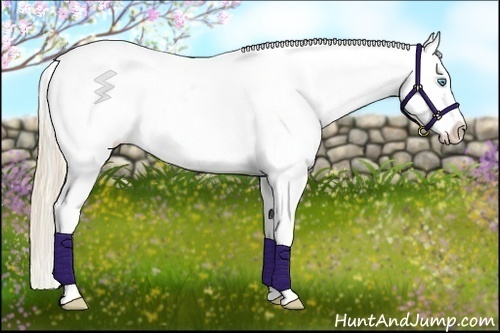
GA Take Me Back
This colt on the other hand has got larger spots than his dam and his foals have shown an increase in spot size as well. Again WF is 'None' on the colt and 'minimal' on his dam, so that again implies its got nothing to do with spot size. I'll have to keep going through my horses and see if I can find other examples. I do seem to have one stallion that consistantly produces small spots, where as another who tends to be a bit all over the place. Neither of these boys are appies, so I suspect there is some test breeding and more digging to do lol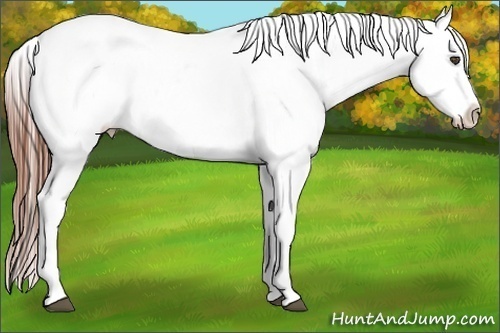
GA Snowed In II
Also interesting to note the dam of this colt has produced both big spots and small spots when bred to different stallions. Coincidentally, this boy's sire has increased the spot size on pretty much every appaloosa foal he's sired. The sire of the half sister on the other hand has produced two small spotted foals to the same mare.
GA Night Song
Half sister, different stallion, same mare.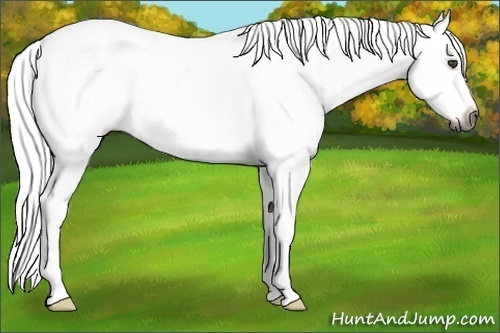
2G Shesa Singer
Edited to add I am actually studying for a genetics exam on Wednesday so this has been a fun way to 'study' lol -
To really get a good test, we need to breed ten or so mares of each spot size to the same stus and compare the results. It would take a couple game years I'm sure, but I feel that would be the most accurate.
For example:
10 micro dots
10 mid dots
10 large dots
Bred to the same micro dot stud year 1, then all bred to a mid dot year 2 and then a large dot year 3.
If I had the horses, I could do it. I have the space. Lol#28036




